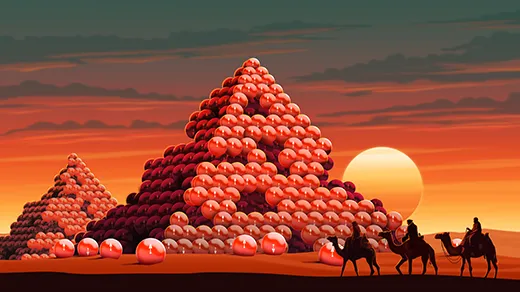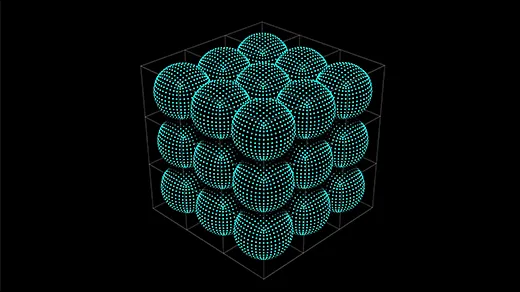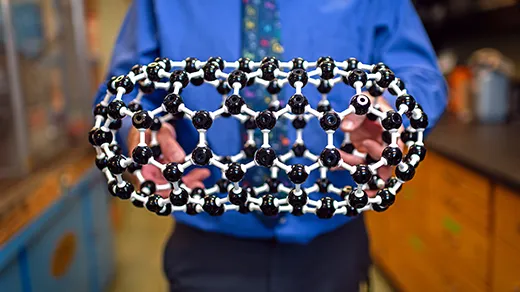What's up in
Crystals
Latest Articles
Why Is Ice Slippery? A New Hypothesis Slides Into the Chat.
A newly proposed explanation for the slipperiness of ice has revived a centuries-long debate.
First Map Made of a Solid’s Secret Quantum Geometry
Physicists recently mapped the hidden shape that underlies the quantum behaviors of a crystal, using a new method that’s expected to become ubiquitous.
A Quantum Trick Implied Eternal Stability. Now the Idea May Be Falling Apart.
A series of advances seemed to promise the impossible: the existence of quantum states that would never, ever fall into disarray. But physicists are now discovering that the pull of disorder may not be so easily overcome.
Is Perpetual Motion Possible at the Quantum Level?
A new phase of matter called a “time crystal” plays with our expectations of thermodynamics. The physicist Vedika Khemani talks with Steven Strogatz about its surprising quantum behavior.
Room-Temperature Superconductor Discovery Meets With Resistance
A paper in Nature reports the discovery of a superconductor that operates at room temperatures and near-room pressures. The claim has divided the research community.
Mathematicians Complete Quest to Build ‘Spherical Cubes’
Is it possible to fill space “cubically” with shapes that act like spheres? A proof at the intersection of geometry and theoretical computer science says yes.
‘Fullertubes’ Join the Family of Carbon Crystals
The buckminsterfullerene revolution never came, but some researchers are eagerly exploring the properties of newfound carbon crystals known as fullertubes.
High-Temperature Superconductivity Understood at Last
A new atomic-scale experiment all but settles the origin of the strong form of superconductivity seen in cuprate crystals, confirming a 35-year-old theory.
Physics Duo Finds Magic in Two Dimensions
In exploring a family of two-dimensional crystals, a husband-and-wife team is uncovering a potent variety of new electron behaviors.








